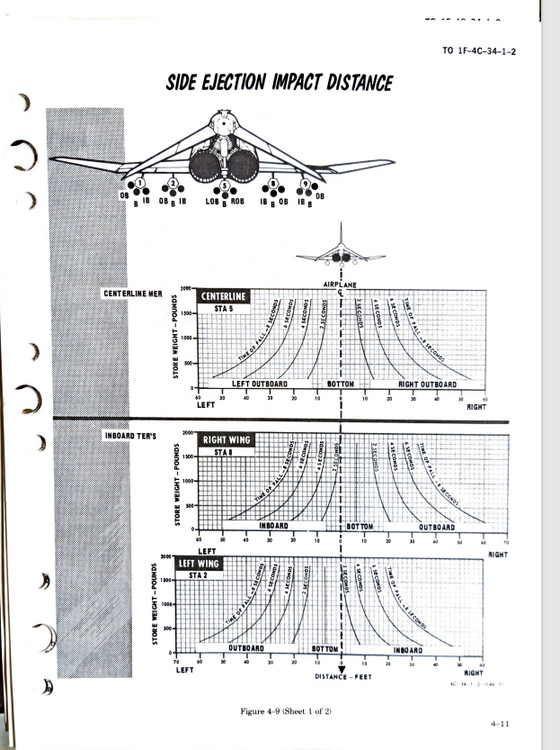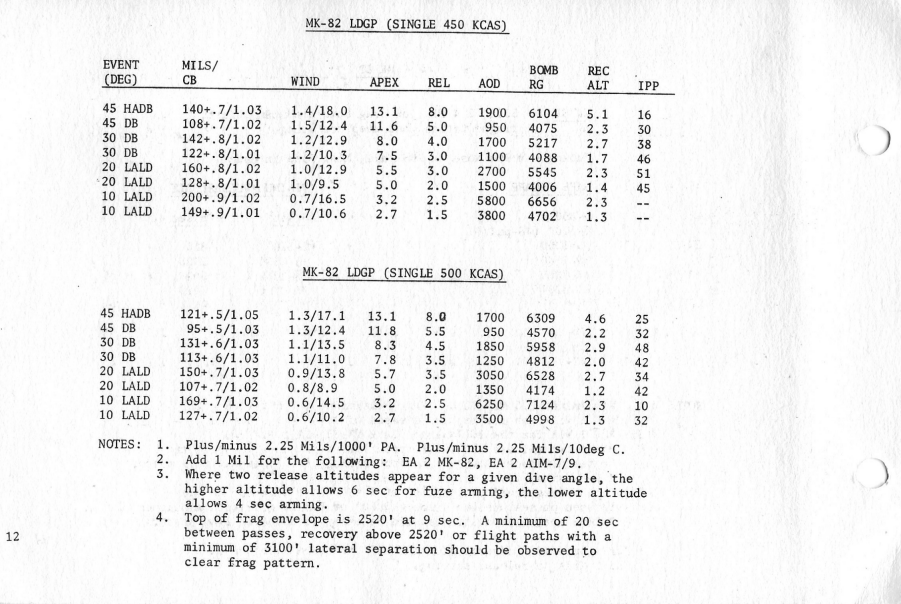-
Posts
348 -
Joined
-
Last visited
Content Type
Profiles
Forums
Events
Everything posted by Kirk66
-
Any update on this? Interested in joining.
-

Unable to add custom Kneeboard pages to new F-5E
Kirk66 replied to Kirk66's topic in Bugs and Problems
That worked! Thank you. "F-5E-3" is the key for the new jet's kneeboards. -

Unable to add custom Kneeboard pages to new F-5E
Kirk66 replied to Kirk66's topic in Bugs and Problems
I'll go give it a try right now...Just got Virtual Desktop working and having fun with that can of worms! -
After updating to the new F-5E, my custom .png kneeboard checklist pages are no longer shown in the cockpit. Tried adding a new folder in the user kneeboard folder labelled "F-5E 2024", while keeping the old "F-5E" kneeboard folder, but no luck. This worked before the update.
-
This is all so sad because of the fundamental misunderstanding of what an over-G will do to an airplane, and what the flight manual limits mean. Jets rarely break apart catastrophically due to a pilot induced over-G. Ultimate G-limits are a lot higher than normal limits. But you can often "bend" a jet by repeated over-Gs - especially assymetrical (rolling) Gs. And once the jet has been over-G'd, it is grounded until fully inspected, and repaired if necessary. So from an operational aspect, over-Gs are bad for keeping your fleet flying. But if jets just broke apart everytime Lt Mongo honks on the stick, you would run out of jets (and Lts) pretty quickly! This, and the ridiculous recip engine time bombs (and paper ailerons on the P-51) are my biggest complaint about DCS as a sim. But, still better than anything else out there right now. Vulture
-
Found the skins, you have to select appropriate country/alliance (for Swiss). Now could be please have more USAF Aggressor skins? I'm really tired of all the Navy (and Hollywood) skins on primarily USAF jets - and there were more of them: 64th and 65th AS in the CONUS based at Nellis, the 26th AGRS at Clark, and the 527th AS at Alconbury in the UK. I flew against all of them IRL. Navy's were called Adversary Squadrons, anyway, NOT Aggressors. They provided DACT (and were fun to fight) but did not do the full-up "Roadshow" training that the Aggressor squadrons did - where they deployed to your home base and provided tailored Red Air academics and DACT threat training. Vulture
-
Where are the new skins? I can only see 4: basic AF grey (with new antenna), two Navy aggressor, and a "Mig-28" BS scheme. Looked in Mission Planner, existing mission, and quick mission. ?
-

Is there any way to enhance vision of aerial targets while using VR?
Kirk66 replied to beastfang's topic in Virtual Reality
Exactly! That's why the TD box was developed! And even at 5 - 6 miles you really can't see aspect, etc. The real world isn't a 5k gaming monitor... -
Now that support for OpenXR Toolkit has been ended, and it's use discouraged, is there an alternative solution for reducing the FOV?
-
Bumping this as I would also like to try this. Using a Quest Pro, I just want to see my button boxes/panels so I can select switches easier, but since I fly multiple aircraft, do not want a full panel mask - and ideally one could toggle the pass-through on and off as needed, so I could still use a mouse on virtual controls that are not mapped to physical controls. Any ideas?
-
Try unchecking the "use eye tracking" box in DCS. That fixed the same problem I had using a Quest Pro. Keep the "foveated rendering" box checked.
-

What does the Quad Views setting in DCS VR do?
Kirk66 replied to sleighzy's topic in Virtual Reality
Back OT: Apparently the eye tracking selection in DCS kills XRNecksafer and crashes DCS when you command a snap look. This is with a Q Pro, Quad Views enabled and working, eye tracking working (checked via QV companion test dots). So if running QV (with eye-tracking enabled and working) and XRNS my config works correctly with the QV box selected but the eye tracking box deselected. So what does the eye-tracking option in DCS do? -
Unchecking the "eye tracking" box in DCS has restored XRNS funcitonality for me. So now have the Quad View box checked, and all is working as before. I wonder what the "eye tracking" box is for? I've confirmed using the Quad Views eye tracking test dots that it is functional with the DCS box unchecked.
-

What does the Quad Views setting in DCS VR do?
Kirk66 replied to sleighzy's topic in Virtual Reality
QP and 4090 here too. Please just post your settings for the rest of us! -

VR user and XRNS , no longer working , Why is that . ?? 2024
Kirk66 replied to KoN's topic in General Bugs
Bumping this thread - since the last update (the big one, not the hotfix) XRNS no longer works, causes DCS to lock up/freeze when a snap look command is used, have to kill DCS process to continue. As long as the XRNS snap look command is not used DCS works fine. When starting DCS I get the following OpenXR processes: Quad View, eye tracking, and XRNS (I think, I'll get a snapshot next time I fire up the game and attach). I'm running a Quest Pro with DFR, eyetracking, win11, have the new quad vue and eye tracking boxes checked in DCS. Up to the latest DCS update had no problems with XRNS, now it's completely unuseable. Ideas? -
Have both the QV and eye-tracking selected and XRNS locks up DCS now. Prior to this update I had QV and eye-tracking enabled and XRNS worked just fine. Quest Pro/4090 etc. If I don't run XRNS app, DCS works fine. I understand that with the latest update you have to have those options checked in DCS - in addition to enabling via QVFR app running in background and eye-tracking enabled for the headset. If so, this looks like a problem with the DCS build.
-
Pitch trim is pretty much dead on compared to the real thing. Yes it was that finicky - you got used to it. Remember that fuel and external loads all move the CG aft, making pitch more sensitive. Which is why it's so much easier to fly in the pattern with only 4k of fuel. Also, the nose down trim on takeoff is there to prevent a pitch up due to accelleration right after takeoff; 3 down means you dont really have to touch pitch trim until 350 knots or so. Pitch forces were (are) so light that it wasn't a struggle to hold off the nose down force as you takeoff and accellerate. A stick extension is a big help. I use a 20 cm on a Virpil cm2, strongest springs (still way too weak), no curves. Works pretty good. I do adjust the roll deadband to 66% to make it roll faster since with the long stick it otherwise leads to too much lateral stick movement - feels like a P-51! Vulture
-
"Pilot, where the hell are we? I'm the Navigator and I have a RIGHT to know!"
-
Well, you do have the advantage of a verbal airspeed indicator in the back seat.
-
And for the true MK82 (and BDU-33) afficionados, there are even charts for the dispersion caused by the shoulder positions of weapons on MERs and TERs - due to the "push" from the ejector carts kicking the bomb off the rack and away from the jet. Pre-DMAS this just resulted in a bigger CEP when dropping bombs from the F-4, but with the DMAS kit you could actually input a correction into the system for each store position. But this had to be done prior to each pass, dropping a single bomb, and you had to know what station on the MER/TER the bomb was going to be released from, what kind of bomb, what kind of delivery, etc and plug in the numbers prior to the pass. Lots of fun in the pop pattern, typing into the computer while upside down and pulling a few G's, just to win a few quarters.
-
The bug is that the fuel tank pylons for the 370 tanks should be a part of the tank, and not remain on the jet when you drop the tanks. Those are vertical. The wing outboard weapons pylons are a different item, which may well be canted a bit (we never used those much). But that should not have much (if any) impact on dropping bombs. Vulture
-

T-38A Talon - Community Mod by Veco Simulations
Kirk66 replied to Copprhead's topic in Flyable/Drivable Mods for DCS World
Awesome - with steam gauges - perfect trainer for the F-4E. All we need now is a Tweet, and a T-bird to go with the F-86. Vulture- 90 replies
-
- 3
-

-
May I suggest increasing roll in and release altitudes instead of using a lower speed? You can achieve the same amount of time to put the pipper on the target that way, and be much more survivable. Note that all diving deliveries were figured for KCAS - not KTAS, because you will be looking at the ASI not the tiny TAS indicator. TAS is only used for level and loft deliveries where you can set a steady run-in speed (helped by the WSO calling the adjustments for speed) before you release or pull. A technique for hitting your release speed is to try different throttle settings and roll in speeds; after a few tries you can pretty much just set the throttle when you roll in and by the time you get to your release altitude you will be close to your desired speed. Then you can correct for any speed error just before release (fast: release a bit early/high; slow: release a bit late/low). Trying to hold it to 350 will be tough - 450 is easier, and 500 even better! Using speed brakes was a no-no because you want all the speed you can get coming off the target after pissing off a buch of guys with machine guns... We were trained to shoot for no more than 5 seconds tracking time during a dive bomb pass, and altitudes set accordingly. Any longer and you stood a good chance to get shot down, any less and you may not have time to get the pipper on the target so the pass would be wasted. It's also really important to use the aim off distance (AOD) and initial pipper placement (IPP) when rolling in, as it give you a starting place for the pass, then you adjust for dive angle and speed (and winds) and pickle on your corrected aimpoint. Yeah, it happens fast, but so does hitting a fastball or shooting a basket - practice is the key! Or just use Dive Toss Funny (and maybe even true) story about a Brit Harrier during the Falklands war. Planned a level delivery of some cluster bombs for 500 knots or so, but during the actual attack went across the target area at over 600 knots. When asked during the debrief "why 600 knots?", his answer was "because the bloody jet wouldn't go any faster!" Cheers!
-
These are excellent kneeboards! Just a suggestion: you use 350 knots for your conventional LD dive bomb deliveries, which is a bit slow - IRL we used 450 or 500 KCAS. See this extract from a conventional bombing guide. This is available in user files at: https://www.digitalcombatsimulator.com/en/files/3335473/ Note that these are real world numbers, so the MILS/Cb may be a bit off - but probably pretty close. Cheers!




